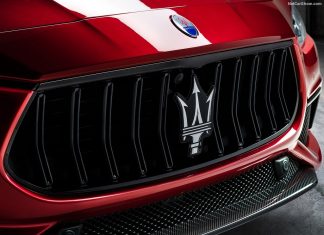After years of bad circumstances when buying a new car seemed like an impossible dream, things are finally starting to look up for the auto industry. Factors such as inflation, supply chain disruptions, and high interest rates led to a significant drop in auto sales in the past. That said, dealerships such as Bomnin Chrysler Dodge Jeep Ram Doral are stocking more cars than ever, and the buying interest seems to grow progressively.
After going through such dark times when buying a car felt impossible, the auto industry is finally going through a rebound. Experts believe that car sales are likely to soar, showing the best numbers since 2019. That said, in light of everything the auto field went through, we can’t help but ask ourselves: how are we so sure that things will change? Well, there are a few logical reasons that could suggest this course, and this article will go through some of them.
Economic Stability Leads to Confidence
Inflation went through a series of ups and downs in the past couple of years, reducing the purchasing confidence of many potential car buyers. The job market also had a lot to suffer in the past few years, with 2023 seeing a significant decline in hires and job openings. As finances were uncertain for so many people post-pandemic, buying a new car was the least of their worries.
With the unemployment rate dropping and the job market becoming stronger, buyers now have financial confidence that they can buy such a new asset. Tax cuts, higher wages, and incentives from the government make individuals more likely to spend money, especially on things they could benefit from. Very often, this asset is a car, as it makes it easier for people to commute from one area to another without relying on public transport.
Recovery in the Supply Chain
In 2021-2022, the world went through a semiconductor chip shortage, which decreased the production of chips frequently used in electronics. The auto industry was significantly impacted by this, cutting the production of cars by around 11.3 million and leading to a shortage of new vehicles. This eventually led to a price hike for all new cars made around that time, making it difficult for people to buy cars that were not second-hand.
With the crisis coming to an end and the supply chain finally recovering, we will likely see an increase in the production of new cars. Dealerships will likely be stocked with new vehicles, their availability cutting the dealer markup. A better inventory could lead to competitive prices, which could once more cause U.S. car sales to surge.
Consumers Drawn to New Models
As part of society, we are always looking forward to buying the next best thing. With the supply chain finally stabilizing, we see plenty of manufacturers taking things a step forward, pushing toward innovation. New cars will likely be equipped with technologies such as self-driving and fuel efficiency, increasing the overall appeal for savvy buyers.
Luxury vehicles are also becoming more coveted than ever, especially due to their improved entertainment systems. Travel-equipped models have also become a new favorite among tourists, many preferring to enjoy the comfort of their own cars rather than consistently crash at hotels. Every new launch of these convenient models creates a new buzz, drawing new and veteran drivers alike to test these new features.
Interest Rate Fluctuations and Auto Sale Interest
Most individuals rely on a car loan to purchase their vehicles. That said, the high interest rates of the past made it difficult for people to afford loans, causing them to postpone their car ownership plans. With the Federal Reserve claiming the interest rates will not likely drop, last year’s decrease could suggest a different story.
The matter will likely be decided in spring, but if it stays on that route, we are looking at more affordable auto loans. This could be a smart tool against inflation, as it will bring more buyers to the market and potentially add more to the global economic flow.
The Popularity of EV Boosts Car Sales
With gas prices consistently going higher, drivers are drawn to models that use less fuel such as electric vehicles. With EV charges even being free in some areas, many prefer full-electric or hybrid models that are not only more affordable but also less impactful on the environment. The latter is a key factor, with people becoming more and more environmentally conscious.
Car manufacturers are also shifting their focus toward electric vehicles, creating automobiles that can drive faster over longer distances. The short distance span of electric cars kept individuals from fully moving toward this option. Still, as technology improves, so will the interest in this type of vehicle. Increasingly more charging stations are popping up in every city, and drivers are feeling more confident making the switch. Another factor is that EVs are becoming more affordable than ever.
Replenishing Fleets Rental Companies
Economic uncertainty did not just keep the average citizen from buying a car; rental companies had just as much to suffer. Due to the high prices and limited supply, many fleet operators could not afford to purchase new vehicles. This led to difficulties in operations, especially since companies such as Uber and cab drivers, along with car rentals have become quite popular.
With the costs of purchasing a car finally balancing, these companies will likely be looking to replenish their fleets. This will cause a boost in the overall sales rate, even leading to early supply shortages.
The Bottom Line
New cars were not as easy to come by in the past years, but things are finally beginning to light up. With the economy and inflation reaching a point of stability, drivers are more confident than ever to replace their older vehicles or buy a new car as their first drive. If this trend is maintained, we can expect to see this surge in car sales going beyond 2025.











